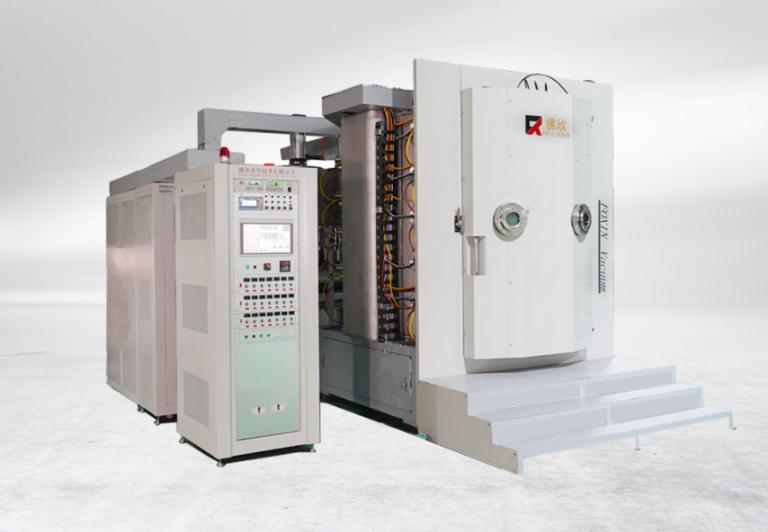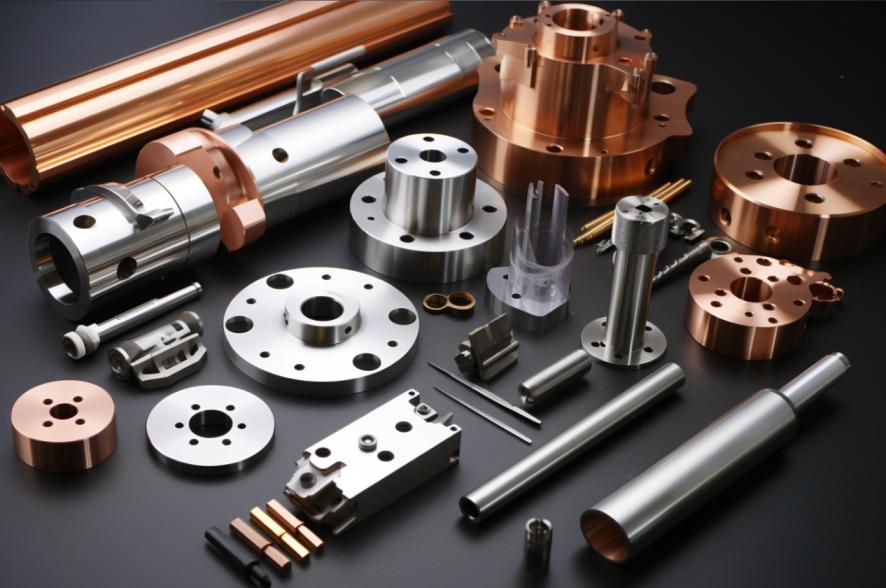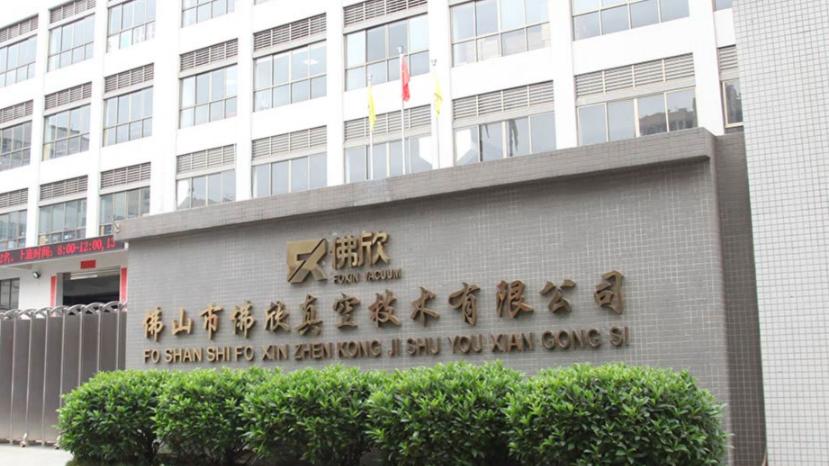What Are the Emerging Needs Driving Demand for Vacuum Coating Equipment 2024?
Vacuum coating technology has become an integral part of various industries, including electronics, automotive, optics, and more. It involves the deposition of thin films onto surfaces in Vacuum Coating Equipment 2024. These coatings provide functionalities such as enhanced durability, improved performance, and aesthetic appeal. Foxin Vacuum Technology Company stands at the forefront of vacuum coating equipment manufacturing, catering to the diverse needs of industries worldwide.
Importance in Various Industries
1.1 Enhancing Product Performance:
Vacuum coating plays a crucial role in enhancing the performance of products across industries. In electronics, thin film coatings are applied to semiconductor devices to improve conductivity and prevent corrosion. Similarly, in automotive applications, coatings are used to reduce friction, enhance durability, and improve fuel efficiency.
1.2 Optical Clarity and Functionality:
Optical coatings are extensively used in the optics industry to enhance the clarity and functionality of lenses, mirrors, and other optical components. These coatings can improve light transmission, reduce glare, and enhance scratch resistance, thereby improving the overall performance of optical devices.
1.3 Advancements in Sustainable Manufacturing:
With growing concerns about environmental sustainability, vacuum coating technology offers a viable solution. By reducing the need for traditional wet chemical processes and minimizing waste generation, vacuum coating helps industries meet their sustainability goals while maintaining high-quality standards.
Growing Demand for Vacuum Coating Solutions
2.1 Expanding Applications:
The demand for vacuum coating solutions continues to grow as industries explore new applications and functionalities. From decorative coatings in consumer electronics to anti-reflective coatings in solar panels, the versatility of vacuum coating technology makes it indispensable in a wide range of applications.
2.2 Market Expansion in Emerging Economies:
Emerging economies such as China, India, and Brazil are witnessing a surge in demand for vacuum coating equipment. Rapid industrialization, coupled with increasing investments in infrastructure and manufacturing sectors, is driving the adoption of advanced coating technologies to meet the evolving needs of these markets.
2.3 Customized Solutions for Specific Requirements:
Manufacturers like Foxin Vacuum Technology Company are increasingly offering customized solutions to meet the specific requirements of different industries. Whether it’s aerospace components requiring high-temperature resistant coatings or medical devices needing biocompatible coatings, vacuum coating equipment can be tailored to meet these diverse needs.
Factors Driving Growth:
3.1 Current Market Status:
In 2024, the vacuum coating equipment market continues to experience steady growth, fueled by the increasing demand for high-performance coatings. Foxin Vacuum Technology Company remains a key player in this market, offering innovative solutions to meet the evolving needs of industries worldwide.
3.2 Increasing Demand for High-Performance Coatings:
Industries such as automotive, aerospace, and electronics are demanding coatings with superior performance characteristics. This includes properties such as wear resistance, corrosion resistance, thermal stability, and optical clarity, driving the need for advanced vacuum coating solutions.
3.3 Advancements in Manufacturing Technologies:
Technological advancements, such as plasma-enhanced chemical vapor deposition (PECVD) and atomic layer deposition (ALD), have expanded the capabilities of vacuum coating equipment. These advancements enable the deposition of thin films with precise control over thickness, composition, and properties, opening up new possibilities for innovative coatings.
3.4 Growing Awareness about Environmental Sustainability:
Environmental sustainability has emerged as a key driver for the adoption of vacuum coating technology. By eliminating or reducing the need for hazardous chemicals and minimizing waste generation, vacuum coating helps industries reduce their environmental footprint while maintaining high-quality standards.
Challenges Faced by the Industry
4.1 High Initial Investment Costs:
One of the primary challenges faced by the Vacuum Coating Equipment 2024 industry is the high initial investment costs associated with acquiring and setting up advanced coating equipment. This can pose a barrier to entry for small and medium-sized enterprises (SMEs) looking to adopt vacuum coating technology.
4.2 Complex Operational Processes:
Operating vacuum coating equipment requires specialized skills and knowledge due to the complex nature of the processes involved. Training and retaining qualified personnel can be challenging for companies, particularly in regions with limited access to skilled labor.

4.3 Technological Limitations:
Despite advancements in vacuum coating technology, there are still limitations in terms of coating materials, deposition rates, and process scalability. Addressing these limitations requires ongoing research and development efforts to push the boundaries of what is possible with vacuum coating equipment.
Impact of Regulatory Standards and Environmental Concerns
5.1 Compliance with Regulatory Standards:
The vacuum coating industry is subject to various regulatory standards and requirements aimed at ensuring product quality, safety, and environmental sustainability. Companies must invest in compliance measures to meet these standards and maintain their market credibility.
5.2 Environmental Concerns and Sustainable Practices:
Environmental concerns, such as the use of hazardous chemicals and waste generation, are driving the adoption of sustainable practices in the vacuum coating industry. Companies are increasingly investing in green technologies and processes to minimize their environmental impact and meet the expectations of customers and regulators alike.
5.3 Emerging Needs and Demands
In the rapidly evolving landscape of industrial manufacturing, emerging needs and demands are reshaping the requirements for vacuum coating solutions across various industries. From enhanced durability to eco-friendly coatings, the demand for advanced vacuum coating technologies is on the rise.
5.4 Specific Requirements for Advanced Coatings:
Industries such as automotive, aerospace, and electronics are seeking coatings with specific characteristics to meet their evolving needs. Enhanced durability, improved performance in extreme conditions, and resistance to corrosion and wear are among the top priorities for manufacturers.
5.5 Eco-Friendly Coatings:
With increasing environmental consciousness, there is a growing demand for eco-friendly coatings that minimize environmental impact while maintaining high performance. These coatings often require innovative formulations and manufacturing processes to meet stringent environmental standards.
5.6 Applications of Vacuum Coating Equipment:
From automotive components to electronic devices and medical implants, vacuum coating equipment finds applications across a wide range of industries. Examples include the application of hard coatings on cutting tools to improve wear resistance, the deposition of anti-reflective coatings on optical lenses to enhance clarity, and the coating of solar panels to improve efficiency.
Innovative Solutions and Technologies
The vacuum coating industry is continuously evolving to overcome challenges and meet the emerging needs of various industries. Innovative solutions and technologies have been developed to enhance coating performance, efficiency, and environmental sustainability.
6.1 Advancements in Deposition Techniques:
Plasma-enhanced chemical vapor deposition (PECVD), magnetron sputtering, and atomic layer deposition (ALD) are among the cutting-edge techniques used in vacuum coating equipment. These techniques offer precise control over coating thickness, composition, and properties, allowing manufacturers to tailor coatings to specific requirements.

6.2 Case Studies of Successful Implementation:
Case studies provide real-world examples of how innovative Vacuum Coating Equipment 2024 technologies are being successfully implemented across industries. From improving the performance of automotive components to enhancing the functionality of electronic devices, these case studies demonstrate the tangible benefits of advanced vacuum coating solutions.
6.3 Integration of Industry 4.0 Technologies:
The integration of Industry 4.0 technologies such as IoT (Internet of Things), artificial intelligence, and automation is revolutionizing the vacuum coating industry. Smart manufacturing processes enable real-time monitoring and optimization of coating parameters, resulting in improved efficiency, quality, and productivity.
Future Outlook and Opportunities
The future outlook of the vacuum coating industry is promising, with numerous opportunities for growth and innovation. Anticipated trends and opportunities include the adoption of vacuum coating in emerging industries, advancements in coating materials, and the integration of Industry 4.0 technologies.
7.1 Adoption in Emerging Industries:
As emerging industries such as renewable energy, advanced materials, and biotechnology continue to grow, there is a growing demand for vacuum coating solutions to meet their unique needs. For example, the development of next-generation batteries and electronic devices relies on advanced coatings to improve performance and longevity.
7.2 Advancements in Coating Materials:
Research and development efforts are focused on developing new coating materials with enhanced properties such as improved durability, functionality, and environmental sustainability. Nanomaterials, bio-inspired coatings, and self-healing coatings are among the areas of active exploration in the field of vacuum coating.
7.3 Recommendations for Stakeholders:
To capitalize on the opportunities presented by the evolving vacuum coating market, stakeholders should invest in research and development to drive innovation, collaborate with industry partners to address emerging needs, and embrace Industry 4.0 technologies to enhance manufacturing processes and stay competitive in the global market landscape.

Conclusion
In conclusion, Vacuum Coating Equipment 2024 technology continues to play a pivotal role in various industries, driven by the growing demand for high-performance coatings, advancements in manufacturing technologies, and increasing awareness about environmental sustainability. While the industry faces challenges such as high initial investment costs and technological limitations, companies like Foxin Vacuum Technology Company are at the forefront of innovation, offering customized solutions to meet the diverse needs of industries worldwide. As the market continues to evolve, embracing sustainable practices and staying abreast of technological advancements will be key to unlocking future growth opportunities.


